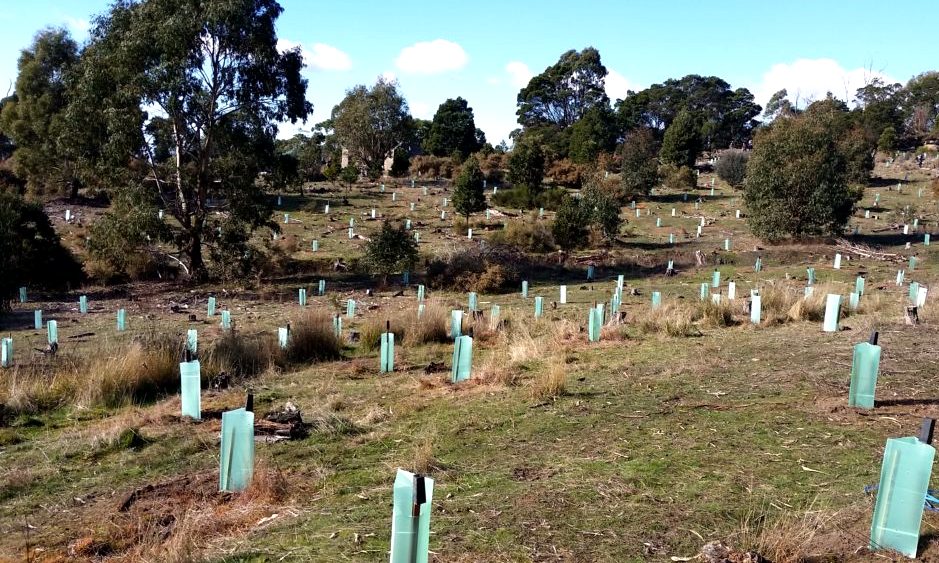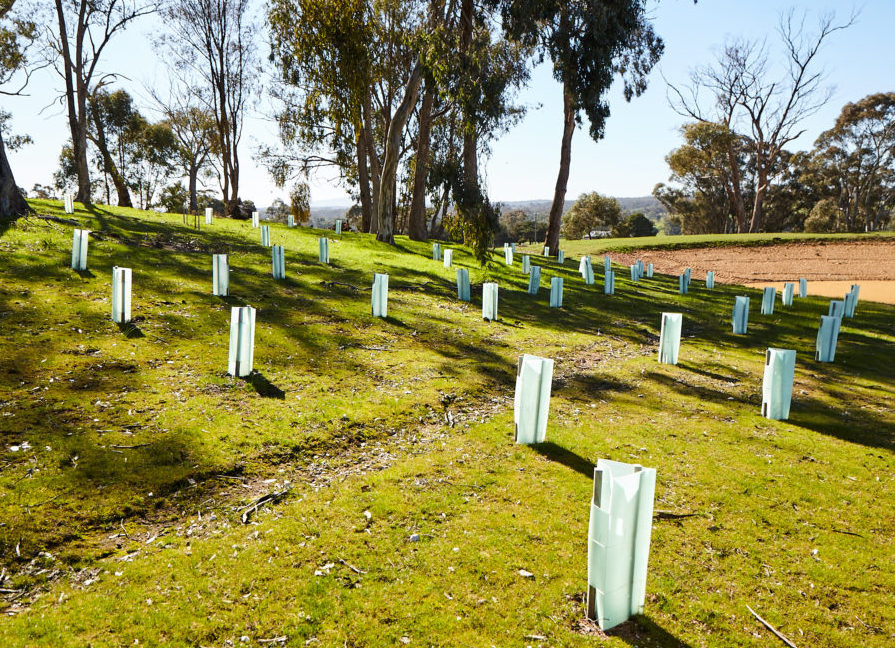Re-connecting Country

Upland forest and watershed restoration project Mount Alexander, Victoria (credit: Connecting Country)
Repairing damaged landscapes and the recovery of wildlife has long been of interest for this Journal. Restoration projects apply ecological principals in actual practice and no two projects are alike. They all begin with a basic concern for restoring land denuded by deforestation, overgrazing, or habitat competition from invasive species.
In Australia, such group efforts are is known as, bushcare. They engage individuals who 'buy-in' to assist reaching the restoration goal in specific, practical, and on-the-ground efforts that can produce measurable results. Connecting Country is one such organization based in Victoria, one of Australia's six states. Members gather to plant nursery saplings, typically species of Eucalyptus (Gum Trees), and other native plants to reconnect fragments of remaining woodlands near to each other. Connecting Country is an example of 'citizen scientists' becoming directly involved in recovery projects. The participants are essential to the design, implementation, and success of the field work and continue their involvement by monitoring birds, animals, and the rate of recovery for the new vegetation. Such metrics are the real indicators of a program's success.

A Connecting Country founder explains the group's thinking:
Forest restoration improves biological diversity, enhances water supplies, and also creates a sense purpose. The projects offer direct opportunities to apply science, have some fun, and build community involvement in conservation. In that, they represent a win, win, win situation. WHB